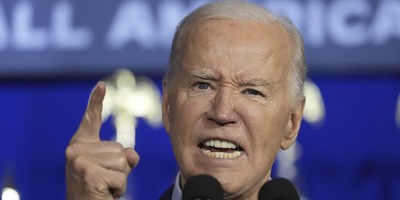“Being a Mormon isn't an easy path.”
Heather Beeseck, a sophomore secondary education major at Potomac State College, would know. She has been involved with the Church of Jesus Christ of Latter Day Saints for two years and was baptized into the faith on August 6, 2011.
The Church, according to the National Review, is the fourth largest religious organization in the United States. Its numbers expand at 2.5 percent higher rates than the Roman Catholic Church and may soon pass the United Methodist Church in size.
Matt Slick of the Christian Apologetics and Research Ministry published estimates that 800 people per day joined the faith. Just under 12 million worship in it worldwide.
Despite their growing strength of numbers, Mormons face a unique challenge of perception. Media coverage is usually the first time that non Mormons are exposed to the faith. As Beeseck explains, “Many people have never met a Latter-Day Saint. Five years ago, I hadn't. The media is all some people ever know about the church, and even once those individuals meet a Mormon, they don't always revise their opinions.”
This can be problematic, as when Lawrence O’Donnell of MSNBC claims that Mormonism was “invented” to excuse “Joseph Smith’s infidelity.” Or when the Huffington Post’s Andrea Stone implies that Mitt Romney has some power to change Church doctrine.
Tom O’Neill, vice chair of the West Virginia Republican Party, has been a Church member for 20 years and active in it for almost a quarter century. He does not see most media coverage as overtly malicious, but says that negative stories “are more often than not the products of misunderstanding.”
Beeseck agrees and states that “for or the most part, the media tries to get its facts right, or at least be believable for their audience.” She then warns that, “when they do get it wrong, the average person believes them.”
Recommended
Misconceptions stem from salacious accusations about the faith, especially coverage of renegade polygamist cults. Covering these stories without mentioning that the Church does not condone polygamy leaves a false impression in the public mind. For example, Mike Taibbi narrated a segment on NBC’s Rock Center that highlighted an ancestor of Romney’s from the 1800s who fled to Mexico to escape prosecution for polygamy. For some reason, NBC considered this a relevant story to run on the eve of the New Hampshire primary.
Media coverage also tends to describe Mormons as systematically oppressing minorities, homosexuals, and women. They also imply that there are mysterious “secretive rituals.” Some outlets on the fringe of, or outside, the mainstream media do blatantly attack Mormonism. As National Review deputy editor Kevin Williamson writes “there are few if any websites dedicated to ‘unmasking’ the Presbyterian Church U.S.A., but there are dozens dedicated to Mormons.”
The Stone story, featured in the Huffington Post last February, took the Church to task over posthumous proxy baptism of Jewish victims of the Holocaust. O’Neill explains (which is necessary, because Stone does not) that the baptisms are not conversions and that recipients are not considered members of the Church. “The practice is based on a biblical understanding that baptism is a rite essential for salvation, together with the Church’s belief in the inviolate ability of a person to choose for themselves whether or not to accept and ratify, in the hereafter, the baptism performed on their behalf.” Stone did quote a Church spokesman as saying that the practice did not have official sanction.
The story also describes how Mitt Romney refused to respond to calls that he try to force the Church to halt the practice, which is akin to demanding that John F. Kennedy over a half century ago convince the Pope to allow clerical marriage.
One of the largest misconceptions is that Mormons are a single unit of voters that will automatically line up behind one of their own. Media types generally, and falsely, assume that groupthink predominates (or should predominate) over individual choices. Traditional teachings of Mormonism frown upon unthinking acceptance of a political leader. One verse from the Mormon Book of Mosiah states, “Now I say unto you, that because all men are not just it is not expedient that ye should have a king or kings to rule over you”
Beeseck speculates that many Mormons, because of the importance of free agency to their faith, may tend to support Ron Paul. She also says that fear of ramped up intolerance might drive some believers away from voting for Romney. The media often demonstrates a fatal analytical flaw in their analysis of religion, race, and gender in politics. They assume that all members of a group will, or should, vote as s single collective bloc, regardless of individual beliefs. These assumptions also reveal the most important misconception held by political types, that everyone is as obsessed with politics as they are.
The blogger “Ablayn” on MormonPerspectives.com states that even sympathetic coverage misses the mark. “In an attempt to seem evenhanded, they never reach understanding. They never talk about what Mormonism means to the heart of the believer.”
Some of the problems encountered by Mormons in media perception of their church might originate in how the Church evolved in its dealings with the public and the press. O’Neill describes how violence and legal assaults against the Mormon church in the 19th century created “a culture within the Church of introversion.” Threats of violence drove believers out of Missouri and Illinois before the Civil War. In 1903, the US Senate refused allow Reed Smoot (no known relation to the author) to take his seat for four years because he also served in the Church.
This difficult history means that, although the last half-century has seen strong attempts at outreach, the Mormon church has traditionally been turned inward. This contributes to an unintentional air of mystery seen by the general public.
Possibly some pundits have read the Mormon holy writings, which do contradict typical liberal and left wing ideologies. The writings in some cases portray excessive authority and taxation as leading to a breakdown of civil society. Another verse from Mosiah, for example, reads, “and thus they were supported in their laziness, and in their idolatry . . . by the taxes which king Noah had put upon his people; thus did the people labor exceedingly to support iniquity.”
The media often misses positive Mormon stories, such as former NBA player Shawn Bradley’s involvement in a school for troubled youth. Bishop Daniel Peterson described in the Deseret News how his work often focused on helping “people suffering the consequences of drug and alcohol abuse, mental illness, emotional problems, dysfunctional families, poverty, various chronic limitations, joblessness and despair.” Nearly 50,000 missionaries serve somewhere in the world at any given time.
A news media that deigns to preach fairness, diversity, and tolerance to Christians needs to practice the same when it comes to Christians.
O’Neill emphasizes the similarities between Mormons and other Christians. “We are not out to ‘convert the world,’ but to offer an invitation to those who are looking for something. We’re pretty normal, regular people, and we just want to help make our communities better places.”
Beeseck offered her own personal insight, saying “My faith is my life.”

























Join the conversation as a VIP Member